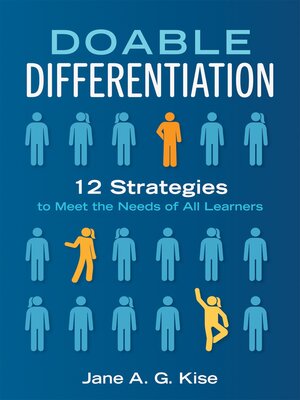Doable Differentiation
ebook ∣ Twelve Strategies to Meet the Needs of All Learners
By Jane A. G. Kise

Sign up to save your library
With an OverDrive account, you can save your favorite libraries for at-a-glance information about availability. Find out more about OverDrive accounts.
Find this title in Libby, the library reading app by OverDrive.



Search for a digital library with this title
Title found at these libraries:
| Library Name | Distance |
|---|---|
| Loading... |
Differentiating for students' learning preferences can often seem too complex and complicated for too little gain. Learn a better way forward with the guidance of Doable Differentiation. Author Jane A. G. Kise provides a series of straightforward, high-reward strategies that K-12 educators like you successfully use in their daily practice to support, engage, and challenge students with diverse learning styles.
Contents:
Introduction: What Makes Differentiation Doable?
Part 1: The Foundation
Chapter 1: Cognitive Processes and Effective Differentiation
Chapter 2: Clear Learning Goals and Expectations
Part 2: The Strategies
Chapter 3: Choice
Chapter 4: Wait Time
Chapter 5: Unambiguous Instruction
Chapter 6: Pressure-Prompted Accommodations
Chapter 7: Student-Centered Discussions
Chapter 8: Curiosity Creators
Chapter 9: Open Questions
Chapter 10: Concept Maps
Chapter 11: Big Notes
Chapter 12: Moveable Organizers
Chapter 13: Planned Movement
Chapter 14: Talking to Write
Part 3: Lesson Planning
Chapter 15: Two-Step Differentiation
Epilogue
References and Resources
Index







